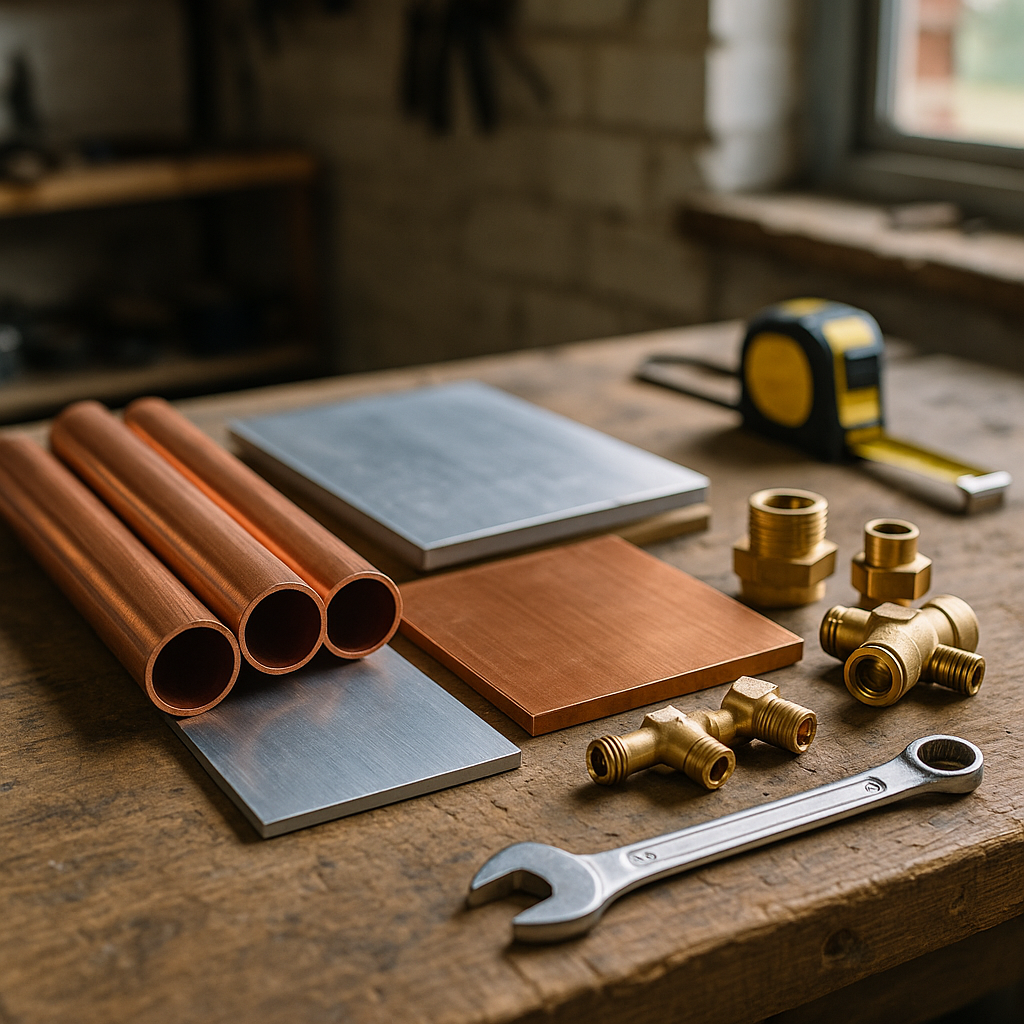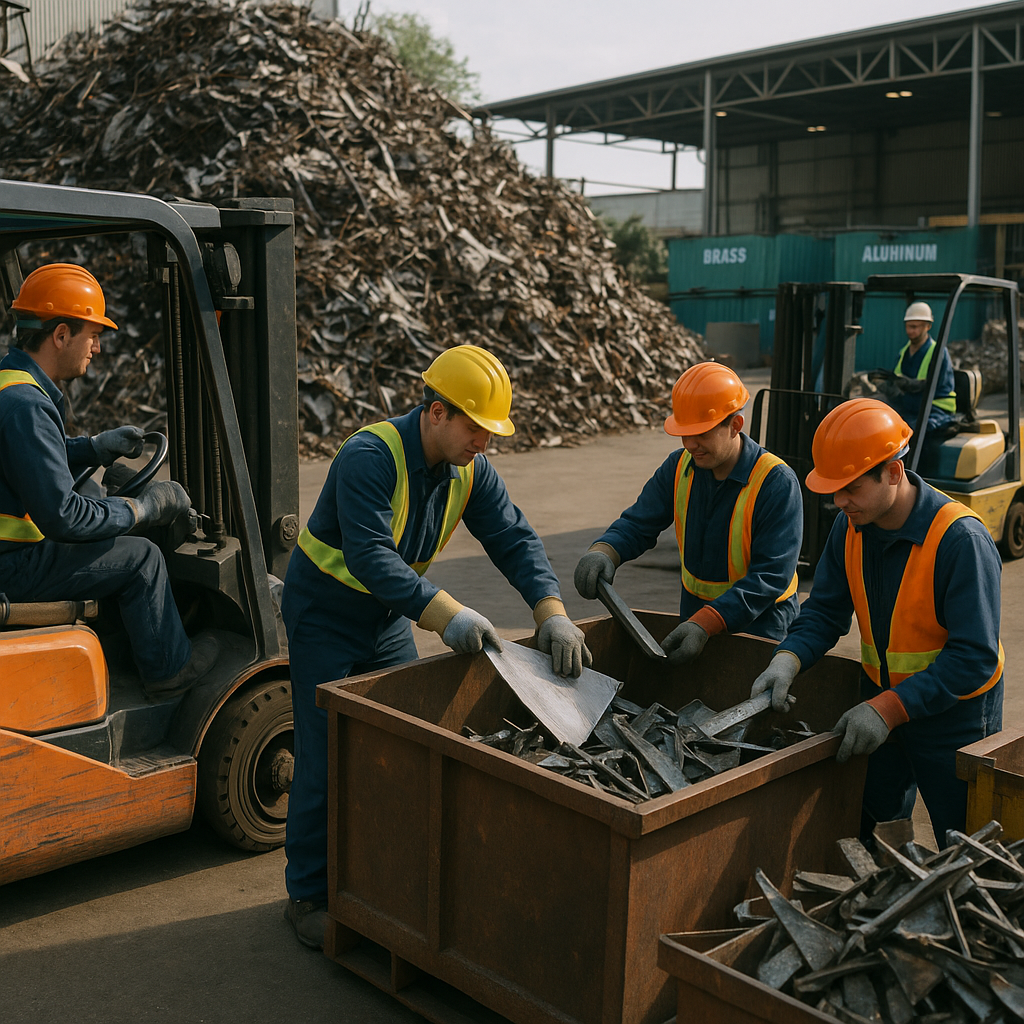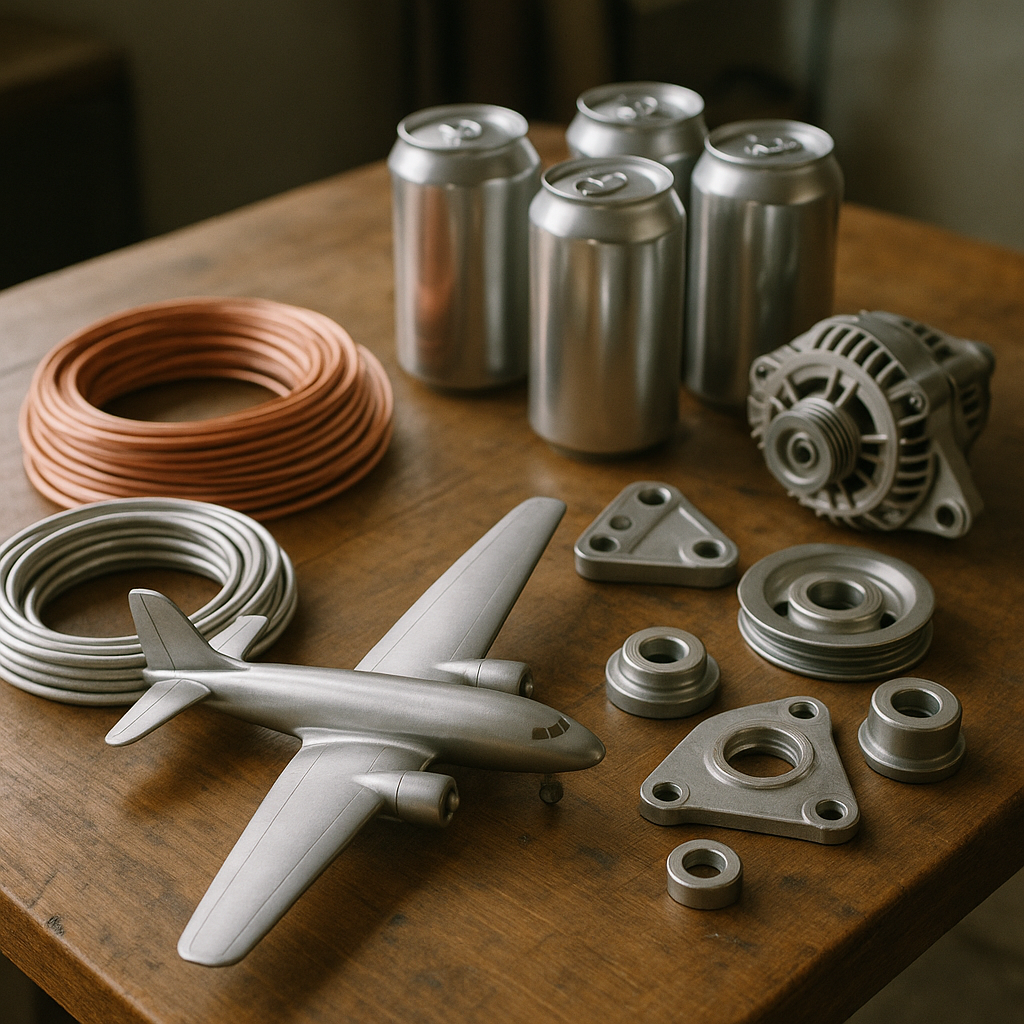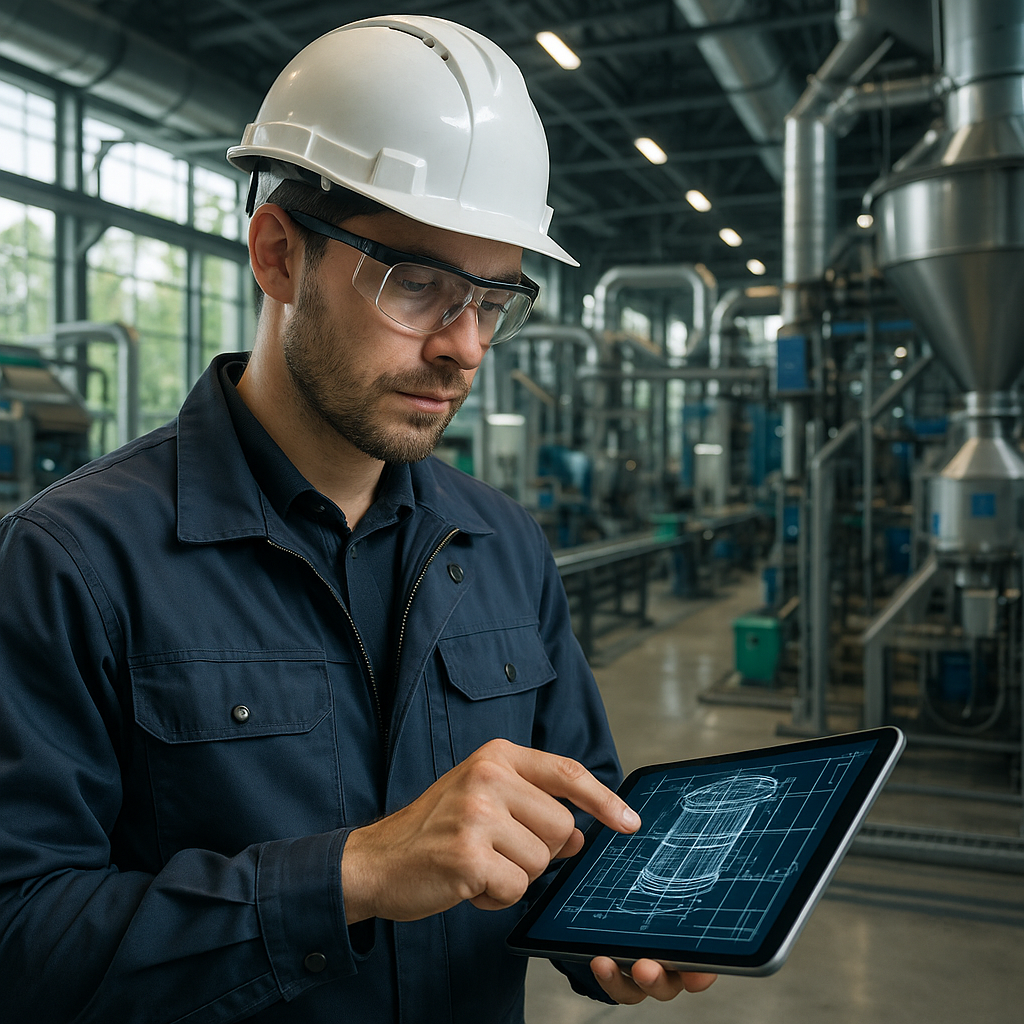5901 Botham Jean Blvd, Dallas, TX 75215
Non-Ferrous Metal Processing: Methods, Recycling Benefits, and Industrial Applications
September 16, 2025In metallurgy, non-ferrous metal processing is a cornerstone of modern manufacturing and recycling operations. This specialized field focuses on metals that contain little to no iron in their composition. Aluminum, copper, zinc, lead, and titanium are among the most commonly processed non-ferrous metals, each offering unique properties for industrial applications.
Non-ferrous metals provide distinct advantages that make them essential in many sectors. Their superior resistance to corrosion, lightweight nature, excellent electrical conductivity, and non-magnetic properties make them critical materials in everything from aerospace components to everyday electronics.
The processing of these valuable metals involves multiple stages, from initial extraction from ores and compounds to refining, shaping through casting or machining, and ultimately recycling. This comprehensive approach ensures these materials continue to efficiently serve industries while supporting sustainability through effective resource management.
What Are the Main Methods of Non-Ferrous Metal Processing?

Non-ferrous metals like copper, aluminum, and silver require specialized processing methods to extract and purify them from various sources. Three key techniques dominate the industry today: electrowinning, precipitation, and sensor-based sorting. Each method offers unique advantages depending on the source material and desired output quality.
Electrowinning: Extracting Metals Using Electricity
Electrowinning uses electrical current to recover metals from solutions. The process begins when metal-containing materials are dissolved in a liquid solution through leaching. This creates what is known as a leach solution.
In the electrowinning cell, two electrodes (an anode and cathode) are submerged in this solution. When electricity passes through, positively charged metal ions move toward the cathode. The metals gradually form a layer on the cathode, creating a pure metal deposit that can be harvested.
This method is particularly effective for recovering copper, nickel, tin, and precious metals like gold and silver. Electrowinning facilities can operate continuously, making them ideal for industrial applications such as mining operations, refining facilities, and wastewater treatment plants where metal recovery is economically valuable.
Precipitation: Creating Solid Metals from Solutions
Precipitation is among the most widely used methods for recovering metals from aqueous solutions. This chemical process forms insoluble solid materials (precipitates) from liquid solutions by adjusting pH levels or adding specific chemicals called precipitants.
Common precipitants include sodium and calcium hydroxides or oxides. These chemicals raise the pH of the solution, causing dissolved metals to form insoluble metal hydroxides that can be collected.
Precipitation serves two primary functions in the recycling industry. It recovers valuable metals from industrial processing solutions and plays a crucial role in wastewater treatment by removing metal contaminants before water is discharged or reused. The method is especially useful in facilities dealing with mixed metal waste streams where selective recovery is needed.
Sensor-Based Sorting: Technology-Driven Metal Separation
Sensor-based sorting represents the cutting edge of non-ferrous metal processing. These systems use advanced sensors to detect and separate specific metals from complex mixtures automatically.
The process typically begins with material preparation. Ferrous metals are removed using magnets, and materials are screened to ensure proper sizing. The prepared material then passes through specialized sorting equipment equipped with sensors like X-ray transmission technology.
These sensors can detect different metals based on their unique properties, such as atomic density. When the sensors identify target materials, precise air jets or mechanical systems separate them from the stream.
Sensor-based sorting excels at processing e-waste, automotive shredder residue, and mixed metal scrap. Modern systems can achieve remarkable purity levels—some recovering non-ferrous metals with greater than 99% purity. For example, advanced X-ray transmission technology can separate copper particles smaller than 1mm from mixed materials, achieving purity levels exceeding 99%.
| Processing Method | Description | Metals Processed | Key Applications |
|---|---|---|---|
| Electrowinning | Uses electrical current to recover metals from solutions. | Copper, Nickel, Tin, Gold, Silver | Mining, refining facilities, wastewater treatment |
| Precipitation | Forms insoluble solid materials from solutions by adjusting pH levels or adding precipitants. | Mixed metal waste streams | Metal recovery from industrial processes, wastewater treatment |
| Sensor-Based Sorting | Uses advanced sensors to detect and separate specific metals automatically. | Non-ferrous scrap, e-waste, automotive shredder residue | e-waste processing, high-purity metal recovery |
Each of these processing methods plays an essential role in the non-ferrous metal recycling industry. As technology advances, these techniques continue to improve, enabling higher recovery rates and greater resource conservation in our increasingly metal-dependent world.
Why is Recycling Important in Non-Ferrous Metal Processing?

Recycling is essential in non-ferrous metal processing because these metals retain their properties indefinitely through repeated recycling cycles. Unlike many other materials, aluminum, copper, zinc, and other non-ferrous metals can be recycled multiple times without quality or performance degradation.
The energy savings from recycling non-ferrous metals are substantial. Recycling aluminum, for instance, requires up to 95% less energy than producing it from raw bauxite ore. This significant reduction in energy consumption translates directly to lower carbon emissions and reduced environmental impact.
Resource conservation is another significant advantage of non-ferrous metal recycling. Mining virgin materials often leads to habitat destruction, soil erosion, and water pollution. By recycling these valuable metals, we lessen the demand for environmentally harmful extraction activities while preserving finite natural resources for future generations.
The economic benefits of recycling non-ferrous metals are equally compelling. The recycling process is considerably more cost-effective than primary extraction, reducing production expenses for manufacturers while creating jobs in the recycling sector. This economic benefit extends throughout the supply chain, from collection to processing and remanufacturing.
Recycling non-ferrous metals significantly reduces waste sent to landfills. These metals make up a substantial portion of industrial and consumer waste. Diverting them from disposal sites frees up valuable landfill space and prevents potential soil and water contamination from metal leaching.
The circular economy benefits of non-ferrous metal recycling are significant. These metals exemplify materials that can remain in continuous use, supporting sustainable manufacturing practices and reducing the overall environmental footprint. Each ton of recycled aluminum saves approximately nine tons of CO2 emissions from entering the atmosphere.
For industries requiring high-performance materials, recycled non-ferrous metals offer properties identical to virgin materials but with far less environmental impact. This makes them ideal for applications in automotive, aerospace, construction, and electronics manufacturing, where performance and sustainability are priorities.
The global market for non-ferrous metals continues to grow, with projections indicating expansion from $10.5 billion in 2024 to $15.8 billion by 2033. This growth highlights the critical importance of establishing robust recycling systems to meet demand sustainably without exhausting natural resources or causing unnecessary environmental harm.
What Are the Key Applications of Processed Non-Ferrous Metals?

Processed non-ferrous metals drive innovation across various industries due to their unique properties. These metals offer excellent strength-to-weight ratios, corrosion resistance, and specialized characteristics that make them indispensable in modern manufacturing. Here are the major applications where these versatile materials significantly impact.
Aluminum in Aircraft Manufacturing
The aerospace industry heavily relies on aluminum for its lightweight properties and structural strength. By weight, aluminum makes up 80% of modern aircraft components. Its high strength-to-weight ratio enables planes to maintain structural integrity while minimizing overall mass.
Aluminum is used in fuselages, wings, flooring, and seating frames. The Wright Brothers recognized its potential early, using an aluminum crankcase in their Wright Flyer. Today’s commercial airliners wouldn’t be possible without aluminum’s unique properties. Its corrosion resistance is ideal for components exposed to changing atmospheric conditions.
Magnesium in Automotive Transmissions
The automotive industry embraces magnesium alloys in transmission components for their significant weight advantage. Magnesium is 75% lighter than steel and 33% lighter than aluminum, offering substantial benefits for vehicle performance and fuel efficiency.
Transmission cases made from magnesium help reduce a vehicle’s total mass while improving weight distribution. Magnesium’s high strength-to-weight ratio allows manufacturers to create lighter vehicles without sacrificing durability. Its excellent dimensional stability ensures transmission components maintain precise tolerances under stress.
Testing shows magnesium components are highly compatible with automatic transmission fluids under challenging conditions. Despite concerns about reactivity, magnesium parts exhibit minimal corrosion when exposed to high temperatures, condensation, water, or galvanic coupling with steel.
Titanium in Sports Equipment
Titanium has transformed sporting goods manufacturing, particularly in golf clubs. Although first discovered in 1791 by Reverend William Gregor, titanium’s potential in golf equipment wasn’t realized until the 1990s.
Golf club designers leverage titanium’s strength and light weight. It’s 45% lighter than steel, allowing for larger club heads with expanded sweet spots without adding weight. The result is faster swing speeds and approximately 20% greater distance on drives.
Beyond golf, titanium is used in tennis rackets, bicycle frames, and running shoes. Its corrosion resistance makes it ideal for equipment used in various weather conditions, and its durability significantly extends product lifespans.
Zinc in Electrical Hardware
Industrial environments present significant challenges due to corrosion and chemical exposure. Reports indicate up to 60% of electrical downtime results from faulty connections. Zinc casting and electroplating offer effective solutions.
Zinc provides a protective barrier against corrosion and chemical damage in harsh settings. As a hard, dimensionally stable, and self-lubricating metal, zinc offers excellent electrical and thermal conductivity. It’s used in terminal connections, junction boxes, and other electrical hardware.
Abundant and cost-effective, zinc’s moderate casting temperature ensures energy-efficient production, making it a standard choice for electrical hardware manufacturing where reliability under challenging conditions is essential.
Bronze in Gear Systems
Bronze gears are integral to numerous power transmission systems across industries. You’ll find them in equipment like power transmission gears, jack screws, landing gears, pumps, and various gear-drive systems. Industries ranging from automotive to marine operations rely on bronze gearing solutions.
The popularity stems from bronze’s exceptional wear characteristics. It has lower friction coefficients compared to other metals, resulting in higher efficiency and reduced wear, making it excellent for demanding applications.
| Non-Ferrous Metal | Properties | Applications |
|---|---|---|
| Aluminum | Lightweight, high thermal and electrical conductivity | Aerospace, automotive, packaging, electronics |
| Copper | Exceptional electrical and thermal conductivity, corrosion resistance | Electrical wiring, plumbing, heat exchangers |
| Titanium | High strength-to-weight ratio, corrosion resistance | Aerospace, medical implants, marine applications |
| Zinc | Corrosion resistance | Galvanization, die-casting alloys |
| Nickel | Heat and corrosion resistance | Turbine blades, chemical processing equipment |
| Lead | Sound-dampening, radiation shielding | Batteries, construction materials |
Bronze’s outstanding corrosion resistance, high-temperature tolerance, and excellent machinability make it ideal for gears. It’s easily welded, brazed, and soldered, allowing for flexible manufacturing and repair processes, ensuring performance even in challenging environments.
The versatility of non-ferrous metals continues to grow with technological advances. From traditional uses to innovative applications, these metals remain crucial across industries due to their unique performance characteristics.
Conclusion: The Future of Non-Ferrous Metal Processing

Non-ferrous metal processing is at a pivotal point, with innovations reshaping this crucial industry. Advanced sorting technologies, AI-driven automation, and more efficient recovery methods are transforming how these valuable materials move through the recycling ecosystem. The global non-ferrous metal recycling market is projected to reach $225-$230 billion by 2025, with steady growth expected through 2030. This expansion reflects increased industrial demand and the growing recognition that recycling these metals offers substantial environmental benefits while creating economic opportunities. As manufacturers in automotive, electronics, and construction sectors emphasize sustainability in their supply chains, the focus on efficient processing methods will only intensify.
For businesses and municipalities looking to adapt to this changing environment, partnering with experienced recycling specialists is essential. Contact Okon Recycling at 214-717-4083 for your non-ferrous metal recycling needs and be part of the movement toward a more sustainable, resource-efficient future.
